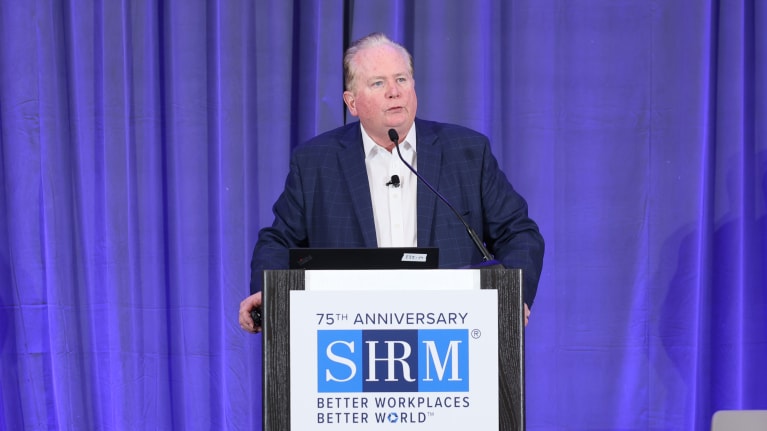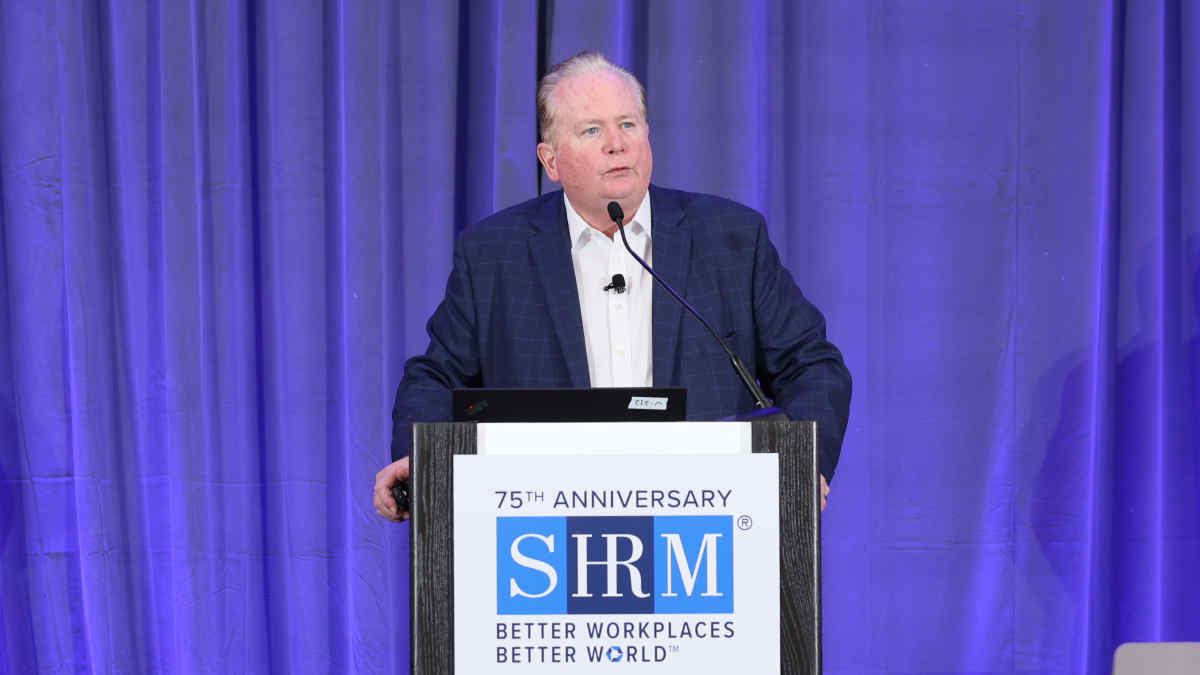

?Employees frequently complain about a “hostile work environment,” leaving it to HR to distinguish whether a situation involves potentially unlawful conduct, bad behavior or just the ordinary stresses of the workday.
“A ‘hostile work environment’ is a legal term with a narrow definition, and most complaints you hear will not meet it,” said James J. McDonald Jr., SHRM-SCP, a partner in the Irvine, Calif., and Tampa, Fla., offices of Fisher and Phillips.
McDonald spoke on June 14 at the SHRM Annual Conference & Expo 2023 in Las Vegas.
He explained that typical complaints such as, “My manager wrote me up for being late,” “My boss said I was an idiot,” “My co-workers gossip about me” and “My manager is so critical of my work” do not constitute a hostile work environment in and of themselves.
“I’m not sure why or how the term came to be so popular among employees,” McDonald said. He noted that it was first used by the U.S. Supreme Court in a sexual harassment case in 1986. The court said then that a hostile work environment exists when an employee is “subjected to unwelcome harassment” that is “sufficiently severe or pervasive” to “alter his or her working conditions and create an abusive working environment.”
McDonald said the most important aspects of the legal definition are that the conduct must be severe—meaning the action is “really bad,” and not just something that hurts your feelings—and that the conduct is pervasive or happens frequently. The conduct is also considered hostile if it is based on a protected classification, such as race, sex, age, national origin, disability, religion or sexual orientation.
“The courts have been careful to make it clear that hurting someone’s feelings or upsetting someone is not illegal,” McDonald said. He added that courts have ruled that laws such as Title VII of the Civil Rights Act of 1964 “are not a general civility code,” isolated and infrequent instances of misconduct are not actionable, and “even incidents that would objectively give rise to bruised or wounded feelings will not on that account satisfy the severe or pervasive standard. Some rolling with the punches is a fact of workplace life.”
Examples of a ‘Hostile Work Environment’
McDonald gave several examples of hostile work environments based on real case law. These situations involved a supervisor or employee:
- Spanking and exposing oneself to subordinates and requiring them to receive kisses in exchange for paychecks.
- Repeatedly threatening to punch a female employee in the mouth.
- Repeatedly calling a Hispanic subordinate a slur.
- Repeatedly calling an older employee “old man” and “pops” and telling him to “drop dead,” in addition to using profanity.
Common themes include using repeated slurs or insults (the repeated part is key); referencing protected characteristics, such as race, sex or age; sexual harassment; and slurs or insults mixed with threats of harm or violence, McDonald said.
What Is Not a ‘Hostile Working Environment’?
McDonald then gave several examples of cases where the courts did not find employee complaints met the legal standard for a hostile work environment. They involved supervisors and employees:
- Suggestively looking at someone or making them feel uncomfortable by complimenting their appearance.
- Using profanity that does not reference protected characteristics.
- Calling an employee a derogatory word on one occasion. In this case, the bad behavior is not pervasive.
- Yelling at a female subordinate and acting rudely toward her, but not referencing gender. “This is bad conduct, and may be a violation of your company policy, but it is not a hostile work environment under the legal definition,” McDonald said.
- Name-calling and teasing that falls short of severe or extreme behavior. “Being harsh or rude is not enough for a hostile work environment,” he said.
- Giving an employee more work and accusing the employee of whining. “This one is fairly common when new managers step in and establish new expectations,” McDonald said. “Being stricter than the previous boss is not a hostile work environment.”
- Closely monitoring a disabled employee’s lunch and bathroom breaks and being rude to them. “Insensitivity alone does not amount to harassment,” the court in this case said.
- Discussing an employee’s poor performance and requiring them to meet organizational standards, including not allowing employees to work from home. Employees not taking attendance as seriously as they used to has become more of an issue since the pandemic, McDonald said.
He also outlined some common themes of conduct not meeting the hostile work environment standard:
- Rude and inappropriate behavior will not likely qualify unless it happens multiple times and has a connection to a protected classification.
- Use of profanity will not qualify, especially where profanity does not include racial or ethnic terms.
- Seductive looks and clumsy attempts at flirtation will not qualify if limited in number and not involving inappropriate physical touching.
- Showing disrespect or talking in a demeaning fashion to a subordinate will not qualify absent a connection to a protected classification.
- Teasing, bullying, gossip or ostracism from co-workers will not qualify.
- Taking disciplinary action against an employee, even if unjustified, will not qualify.
Takeaways
McDonald left attendees with a few important takeaways.
“Do not panic when an employee complains that you have a hostile working environment,” he said. “A hostile working environment has a narrow legal definition, and what most employees think is a hostile working environment is usually not.”
He also advised attendees to determine what happened to make employees feel the way they do and to then distinguish between a potential violation of law, a violation of company policy or just ordinary supervisory conduct.
“If it is ordinary supervisory conduct that is at issue, explain to the employee that it does not qualify as unlawful conduct or against company policy, even if it makes the employee feel uncomfortable,” McDonald said.

